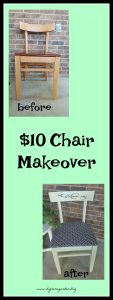Eco-friendly home changes–taking these small steps in your home can contribute to a movement towards impactful changes. The world is in trouble. Every day you hear the news that species extinguish, forests diminish, ice caps melt, the ozone layer depletes, and much more.
These issues are so huge, and while you may think that there’s no way you can help, that just isn’t true. In fact, there are many things that you can do right in the comfort of your own home. You won’t reverse these problems single-handedly, but, with the right upgrades, you can make a difference, and save yourself money at the same time. Whether you are planning a kitchen renovation or overhauling an outdated bathroom, these details matter!
Here are sixteen ways to make an eco-friendly home.
1 – Replace The Old Windows

Double-glazing salesmen have given this important upgrade a bad name. Initially, everyone jumps to the conclusion that these efficient windows are unnecessary or just plain ugly, but that simply isn’t true. In fact, double-glazing is one of the most eco-friendly upgrades that you can make.
Unlike regular windows, double-glazing is comprised of two panes of glass, with a layer of air between them. This insulates your home, keeping it a comfortable temperature all year round.
Windows make significant contributions to an eco-friendly home!
2 – Rethink Your Window Treatments

When it comes to managing the temperature of an eco-friendly home, curtains are another key factor. They provide an extra barrier, which prevents heat from escaping and cold air coming in. Any curtains will do this job to some degree, but for the best effect, you’ll want a pair of high-quality, thick ones.
Just make sure that, whatever you choose, they can be pushed aside throughout the day. When the sun is shining, you can keep your home much warmer by using natural light.
3 – Switch Out The Outdated Light Bulbs

During times when natural light isn’t available, you’re going to need to turn the lights on in your home. With that in mind, you should go around your house and replace all of the light bulbs with LED bulbs.
In the past, people have avoided doing this, as they believed that these bulbs would cost them more. Thankfully, this is far from true. While the initial investment maybe a little bit extra, the energy you save over time will have the planet and your wallet thanking you.
4 – Use Energy Efficient Appliances

Like energy-saving light bulbs, energy-efficient appliances can cost you a bit extra when you purchase them. However, they can also significantly reduce your overall energy consumption, lowering your bills and reducing your carbon footprint.
If you’re planning a kitchen renovation, then take this as an opportunity to replace your oven, microwave, kettle, and other appliances. You can also use these in more efficient ways, such as by cooking multiple meals at once.
5 – Change Your Shower Head

While many of us prefer to shower instead of bathe, both for the convenience and the reduced water usage, showering isn’t always as eco-friendly as you might think. If you like to take particularly long showers, then you could use the same amount or even more water than you do when you take a bath.
To combat this, you should fit a water-saving showerhead. You can also benefit from buying a waterproof timer to set a limit on how long your showers can be.
6 – Install A Water Collection Tank
All of the water that you use will have come from the sky at some point, but that doesn’t mean that you use all of the rainwater available. Instead of allowing this resource to go to waste, you should install a rainwater tank.
These poly water tanks collect, store, and even clean rainwater so that you can use it for a variety of means, including drinking, washing, showering, and watering your plants. The initial investment is significant, but the savings tend to be too.
Also, check your local regulations regarding this investment. Some locations permit rainwater collections, but other municipalities and states prohibit the practice.
7 – Pick Another Heat Source
No matter where in the world you live, the costs of heating can be huge during the winter or colder months. Typical heating solutions can be bad for the environment too.
Fortunately, there are more environmentally friendly options available out there, including solar heating, pellet stoves, and geothermal heating. The most efficient way to heat your home would be geothermal heating, as this uses the constant temperature of the Earth to provide you with heat.
8 – Get A Smart Thermostat
During the colder months, it’s incredibly easy to leave your heating on for longer than you necessarily need it. This can be really wasteful, both in terms of money and energy. The best way to prevent this problem is to install a smart thermostat.
You program these units so that they only turn at certain times of the day. For example, you could set yours to turn on just before you get home from work. This ensures that you stay warm, without using more energy than required.
9 – Add Some Proper Insulation
Unfortunately, even with a smart thermostat, you will continue to lose heat if your home is poorly insulated. Replacing your windows with double-glazing is a great first step, but you should also add insulation to your walls, under your floors, and most importantly, in your attic space.
Heat rises, which means that most of it will be lost through your roof. If you install insulation, however, you can keep this from happening. This is a fairly cheap project that you can even try yourself.
10 – Convert The Attic Space

Rather than stop with attic insulation, you could take the project one step further and convert the space into a bedroom or other living space. The flooring, furniture, and other additions would all help to insulate the area further, reducing heat loss as much as possible.
Plus, because heat rises, the room should always stay relatively warm, which means you might not need a heater (depending on your local climate and building codes). If you wanted to add value to your home, this would also be an effective idea for that.
11 – Choose Second-Hand Furniture

After you convert your attic into a living space, you’re going to need to fill it with furniture. As tempting as it can be to buy all new stuff for your brand new room, you should avoid doing so. Instead, check out charity shops, yard sales, and other second-hand sellers to pick up some pre-owned furniture.
Not only will this cost you a lot less, but it will also help the planet. This is because you’ll use up fewer resources, as well as create much less waste in the long run.
12 – Opt For Reclaimed Wood

Carpets may be cozy, but wooden flooring is much better for the environment. Instead of buying the newest and shiniest materials, you should opt for reclaimed wood. Like second-hand furniture, this will cut costs, create less waste, and use fewer resources.
You can also use reclaimed wood for many other areas of the house, including counter-tops and even the walls. You can always buy an eco-friendly area rug if you wanted to give your attic bedroom that cozy factor.
13 – Block Up Any Drafts

Even with insulation, there are many places in your home where cold air could enter and warm could escape. These include doors, windows, and outlets, and even through letter slots and keyholes. This could waste a huge amount of energy unless you take the time to block up these drafts.
You could put covers on your keyholes, for example, and brushes on your letter slots if you have them. You can also use caulking to seal gaps that shouldn’t be and don’t need to be open.
14 – Embrace Natural Cleaning Products

Many household cleaning products contain harmful chemicals that are bad for the planet. When you wash such products away, you put them into the water supply, meaning that it takes longer to make it safe to use again.
The good news is that in most cases, you don’t even need to use these chemicals to keep your home clean. More often than not, natural products, like vinegar, bicarbonate of soda, and lemon juice work just as well and don’t cost nearly as much.
15 – Invest In Solar Panels

Solar panels are a worthwhile investment for anyone serious about doing their bit for the planet. This feature used only to be reserved for the richest of us, but, while they’re definitely not cheap now, they are a lot more affordable and easier to access.
This is definitely a long-term investment, sometimes even taking whole decades before you make your money back, but it doesn’t provide you with clean energy, as well as the means to sell any that you don’t use.
RELATED CONTENT: Want an Environmentally Friendly Roof?
17 – Speak To Sustainability Consultants
There is a myriad of ways to make your home a greener and more eco-friendly place. However, every home is different so it can be difficult coming up with every way to upgrade your property. Thankfully, there is help available for this task. If you get in contact with a sustainability consultant, they will come and analyze your home, giving you a list of all of the green changes that you could make. This means that you won’t miss out on anything important green alternatives.
To save the planet and yourself some cash, consider the eco-friendly upgrades listed above, or come check out how to protect your garden and the environment at the same time . Do you have any eco-friendly home solutions? Please share in the comments!


Comments are closed.